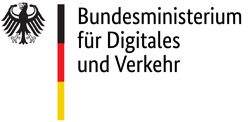Flagging-in ships with asbestos
Those who worked with asbestos in the past often used to breath in the dust and thereby the fine asbestos fibres. A possible result: malignant cancer tumours or changes in the lining of the lung. The employer's liability insurance associations recognize asbestos as a cause of a lung disease known as asbestosis, and as an occupational disease. Asbestosis is the most common cause of death among the terminal occupational diseases. There can be several decades between working with asbestos and the onset of the disease. On average the latency period is 38 years.
Since 1993, asbestos may not be produced or used in Germany, and on a European level since 2005. From 2019 all ships under EU flag from 500 GT must have an inventory of hazardous materials, which must also include asbestos. With the Regulation EU/1257/2013 the EU legally implements the provisions of the Ship Recycling Convention (“Hong Kong Convention”).
Globally, however, there is no ban on asbestos. So, there may still be asbestos present on older ships. If such a ship flags-in under the German flag, the shipowner will have to conduct a risk assessment, compile an asbestos cadaster and arrange mandatory medical check-ups for the seafarers. The prevention division at BG Verkehr has developed a compilation of the shipowner’s obligations when operating an asbestos-contaminated ship.
In addition to this compilation, ship operators have to comply with the provisions of the international SOLAS Convention regarding the ban of asbestos on sea-going vessels. The Circular by the Maritime Safety Committee of the IMO MSC.1/Circ.1374 "Information on prohibiting the use of asbestos on board ships" provides more detailed requirements and information on the topic asbestos on sea-going vessels:
- On ships built before 1 July 2002, asbestos containing materials (ACMs) may be installed and approved as long as they do not pose a risk to the crew's health.
- On ships built on or after 1 July 2002 and before 1 January 2011, new installation of ACMs has been allowed only in exceptional cases.
- On ships built on or after 1 January 2011, ACMs have not been allowed to be installed (refer to SOLAS Chapter II-1/3-5).
The Circular was published in the German "Verkehrsblatt" (transport gazette) 19/2013 on 23 September 2013 in the German language and is mandatory for ships flying the German flag.
Specialists discover asbestos on some sea-going vessels during inspections at a later point in time – for example while compiling an Inventory of Hazardous Materials (IHM) in accordance with EU Regulation 1257/2013 and the Hong Kong Convention on the Recycling of Ships. In these cases, a transitional period of three years applies to carry out an asbestos abatement on board or an exchange of all of the ACMs (refer to Circular MSC.1/Circ.1374). This transitional period of not more than three years cannot be extent, not even if:
- during this time period the ship was temporarily flying a different flag or
- asbestos had already been identified three years prior on a ship that was flying a foreign flag and is now about to change to the German flag.
For questions regarding these requirements, the experts of the Machine Department of the Ship Safety Division of BG Verkehr are gladly of assistance (e-mail maschine@bg-verkehr.de or contact qualified engineer Holger Steinbock via phone: +49 40 361 37-217).

